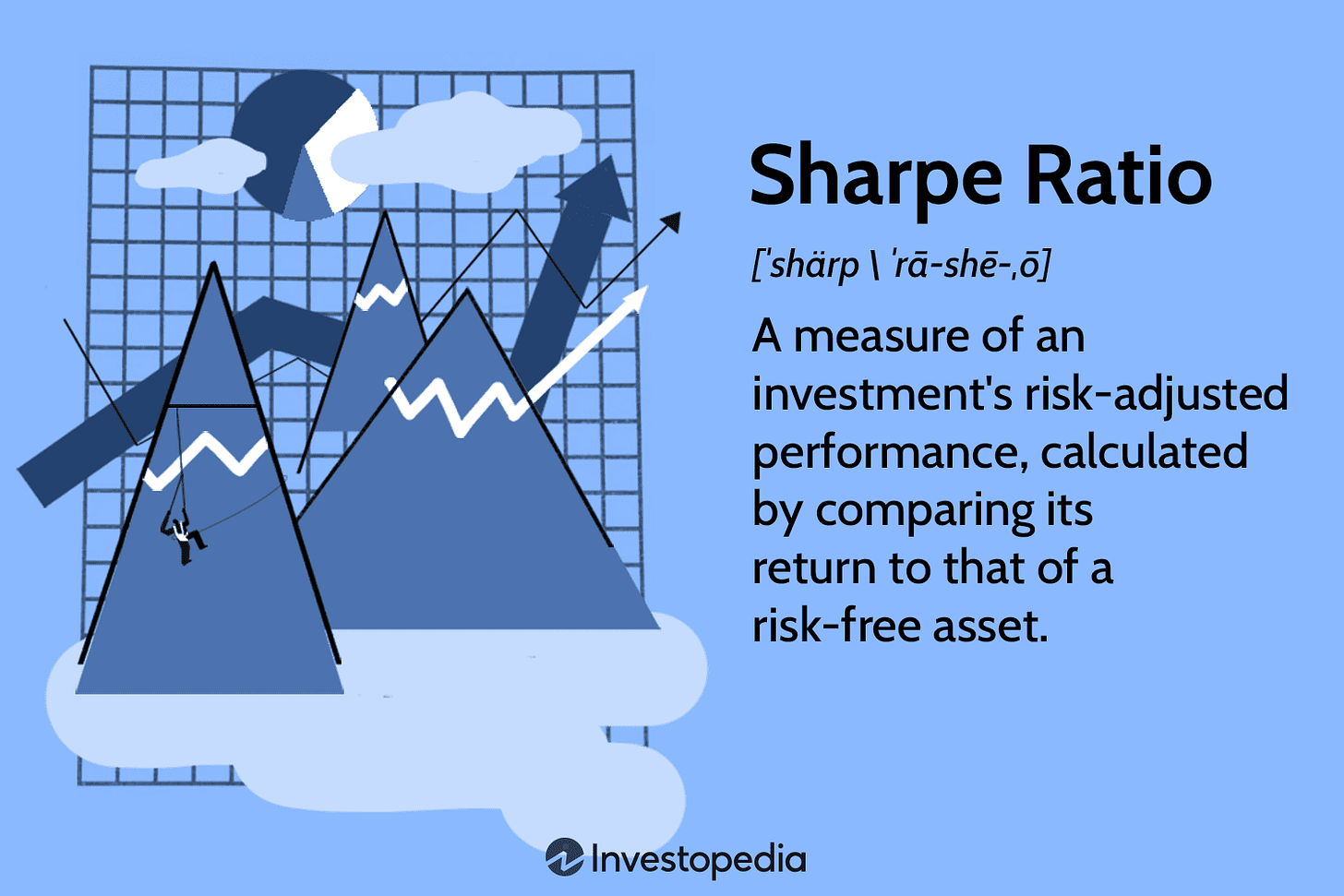Hey there, Friends!
We're back at it again, cracking the code on all this financial stuff. Remember, we're in this together, breaking down the fancy jargon and making this whole money thing make sense. Swing by my Social Media - I keep the conversation going there with more insights and real-time updates.
Most of this article is behind a paywall. Thank you so much to my paid subscribers who keep this dream alive. Thank you for reading!
That being said, today we're going to talk about the Sharpe Ratio…
What’s the Sharpe Ratio, Anyway?
Picture a tool so powerful it helps investors figure out if an investments worth the rollercoaster ride. That’s the Sharpe Ratio. It’s a metric that’s all about balancing risk and reward. Dreamed up by Nobel Prize winner William F. Sharpe back in 1966, it’s like a financial report card. It tells you how much extra return (the “reward”) you’re getting above a risk-free benchmark (think U.S. Treasury bills) compared to the wild swings (the “risk”) you’re enduring to get there. The formula? Simple:
Sharpe Ratio = (Portfolio Return - Risk-Free Rate) / Portfolio Standard Deviation
Portfolio Return: The average payoff from your investment over a set time.
Risk-Free Rate: What you’d earn from a super-safe bet, like a Treasury bill.
Standard Deviation: The wiggle in your portfolio’s returns—basically, how much it bounces around.
Note: I'm not a huge fan of using "Standard Deviation" for Bitcoin since it equates volatility directly with risk—which isn't entirely fair for Bitcoin. It’s like calling a rocket launch “too bumpy.” But that’s a debate for another day, so let’s roll on!
A high Sharpe Ratio is the dream. A higher Sharpe Ratio indicates better returns per unit of risk, while a lower or negative ratio suggests insufficient compensation for the risk being taken. For example, a Sharpe Ratio of 1.0 means earning 1% excess return per unit of risk, whereas a ratio of 2.0 is considered excellent. A low or negative ratio? That’s a red flag telling you that your investment might not be worth the headache.
Why Investors Can’t Stop Talking About the Sharpe Ratio
Investors and money managers are obsessed with this number, and for good reason. It’s pretty easy to compare like assets; Houses with houses, Apple stock vs Microsoft. But what if we need to compare a portfolio of Gold + Big pharma to GameStop + Soy futures? Well, that’s where Sharpe can become very helpful! It’s like a cheat code for comparing wildly different investments on equal footing. Here’s why it’s got everyone’s attention:
Risk-Adjusted Reality: Raw returns can lie. A stock might scream “20% gains!” but if it’s a stomach-churning ride, the Sharpe Ratio might show it’s no match for a steady 10% climber.
Portfolio Perfection: Building a portfolio is like assembling a superhero team—you want max power, minimal drama. A team of all HomeLanders would be problematic. The Sharpe Ratio points you to assets that boost efficiency, shaping smarter allocation moves.
Benchmark Bragging Rights: It’s your yardstick to see if you’re outpacing the S&P 500 or your buddy’s portfolio—without taking crazy risks for mediocre wins. This is often how dicks get measures in financial circles.
Keep It Simple: Math nerds love it, but so do regular folks. It boils down complex risk-return chaos into one easy-to-grasp number.
But it’s not perfect. The Sharpe Ratio assumes returns play nice and follow a bell curve, and that volatility tells the whole risk story. For assets like Bitcoin or options, that’s a stretch. Still, its popularity proves it’s a killer starting point.
How to Juice Your Sharpe Ratio
Now we’re getting to the good stuff! Big names like BlackRock, Fidelity, and Forbes have been broadcasting a bold idea.





